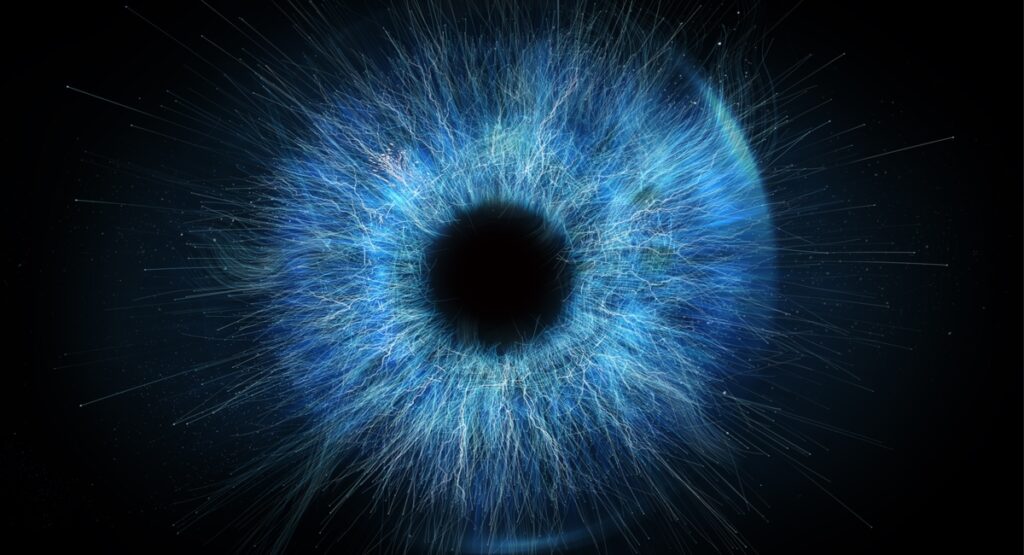The Subtle Body, Senses, and Fruits of Action

As we proceed with the “naturally super” powers of yoga explained within the third chapter of The Yoga Sutras, we must continue to discuss the concepts of samyama (integration), samadhi (spiritual freedom), and all the layers of consciousness. For most of us, our ability to comprehend the workings of yoga, ends with a very superficial understanding of the body/mind connection, and then to extrapolate that understanding to deeper layers of our consciousness can be a leap. However, in our continuous discussions within the third chapter of The Yoga Sutras of Patanjali, I think we all are coming to our own systematic way of looking a bit deeper.
In the last sutra discussion group, we had to delve into the idea of finding the “essence” of meaning within any object or sound…including the minds and languages of other beings. On a very simplified level, I use the idea of “tree” to explain this, though in one commentary the concept of “cow” is also used. First we have the word itself that might bring up differing emotions or feelings within different people – due to their work, their culture, their relationship, their impressions, of “tree”. Then there may be a specific image within each mind that is conjured of a certain tree – I may think of a weeping willow, where another thinks of a pine. The concept of tree for each of us might be rife with memories and thoughts and feelings that actually cover up and hinder the true knowledge and essence of “tree”. But that essence exists – outside of the word, the concept, the individual relationship, the individual feeling. “Tree” exists and a yogi who has integrated all knowledge is not disturbed by any preconceived “tree”, but is truly integrated with its essence.
Same with our own mind and our own thoughts and our own feelings. When we have become integrated so fully with the essence of our own being, we realize we are not separated at all from all the essences of every being. To know our Self most completely makes us knowledgeable of EVERY essential Self, what yoga refers to as purusa. When we relate to others with NO previous impressions, memories, thoughts, or disturbances in our own mind, then we may clearly know the mind of the other and ultimately be able to communicate at the essential level without misunderstanding or mishap. This is direct perception, pure knowledge, and integration.
The next few sutras deal with this integration on the subtle forms of nature and consequences of action. The following translations are from Light on the Yoga Sutras of Patanjali by BKS Iyengar:
III.21 By control over the subtle body, the yogi can suspend at will the rays of light emanating from himself so that he becomes invisible to onlookers. He may again make himself visible by bringing back the power of perceptibility.
III.22 In the same way as described above, he is able to arrest sound, smell, taste, form and touch.
III.23 The effects of action are immediate or delayed. By samyama on his actions, a yogi will gain foreknowledge of their final fruits. He will know the exact time of his death by omens.
If we look at the complete understanding and control of all the elements in the Universe, which is the knowledge acquired by a yogi who has reached the level of samadhi, then there is no element of nature or Self too subtle to be controlled or manipulated. All is vibration and energy and particles and all is utilized to create impressions on the senses. Every action we take has an equal and predictable reaction if we are in tune with our Self and the world around us so completely. Therefore, if we can imagine this level of connection and integration with the world, we can envision the ability to manipulate subtle forms of the sense organs and also see ahead to our future in relation to the waves of karma (consequence) of every action we have taken and their inevitable end.
As the Buddha put it coming from his final enlightenment, he got rid of all the building blocks for the next life. He was able to see and know the karma that had been built and knew the way to eradicate it so that the cycle of death and rebirth no longer occur. And, even if you do not believe in the Buddha or reincarnation, it is obvious in this very life that our actions have consequences, for others and for us. And, in our efforts to walk in a more connected way through the world typically makes life flow easier and with less disturbance of the senses and lessens negative consequence.
Some things to contemplate for our discussion on these Sutras on Oct 3 at 11:00am.
- What is your relationship to a crowd of people – do you stand out or shrink back?
- As you have practiced yoga, have you had a deeper understanding of your own feelings, thoughts, emotions, mental fluctuations? Has that had any consequence in your relationship to others?
- Are you able to reflect on your actions and see their consequence? Long term or short term?
- Have you become aware of patterns within your actions? Physical, mental, emotional habits that feed your vibrations, intentions, actions in life?